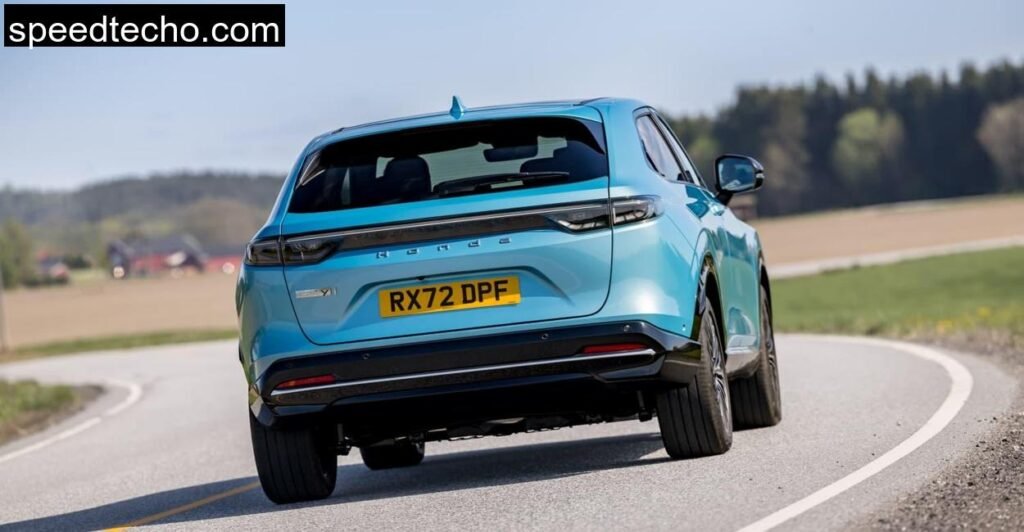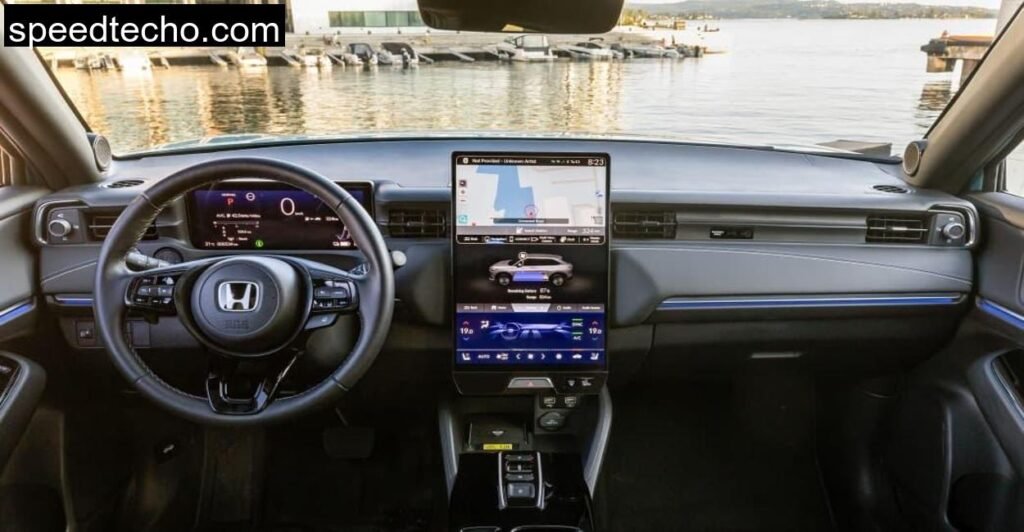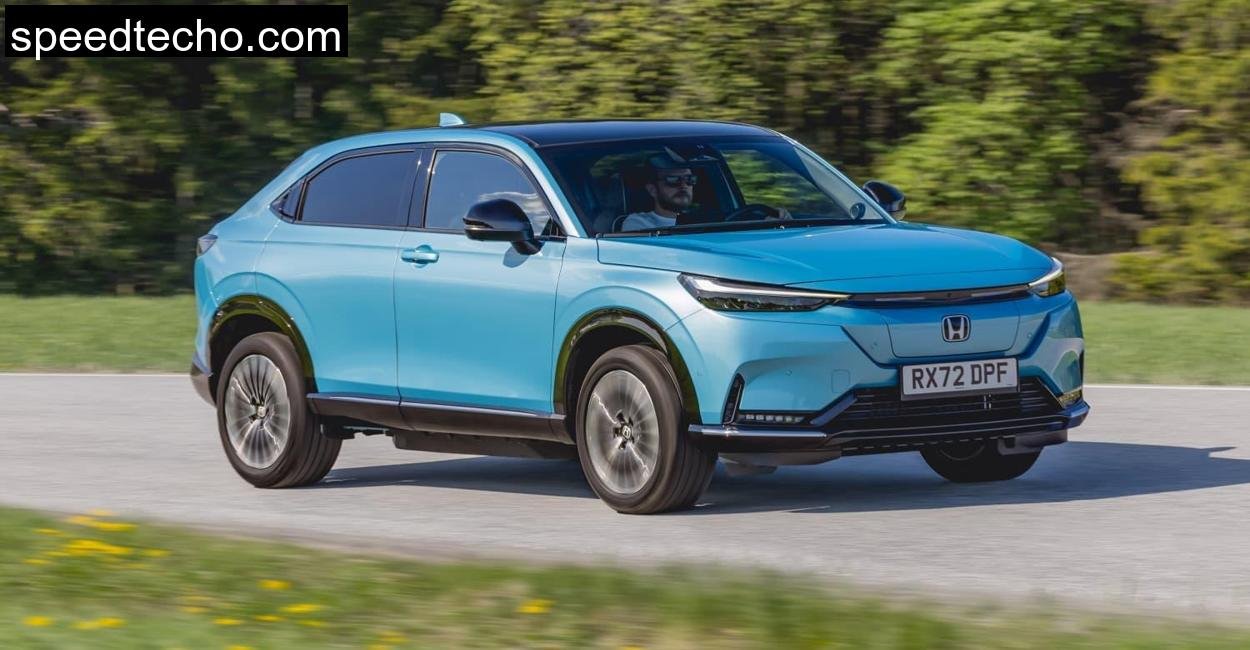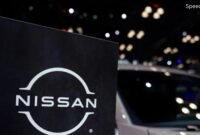Nestled in the beautiful rolling hills of Vorberge, Germany, I recently had the chance to take Honda’s newest electric compact SUV, the e:Ny1, for a thorough spin. Honda, a brand long admired for its engineering but often criticized for its slower adoption of electric mobility, now offers its second fully electric model after the much, discussed Honda e city car. The e:Ny1 is meant to compete head, on with established names like the Opel Mokka, e and Kia Niro EV, but does it deliver? Over winding country roads and steep slopes in Vorberge, I tested the e:Ny1’s real, world performance, tech features, and overall driving experience to see if Honda has finally closed the gap in the electric SUV race.
Honda e:Ny1 , A Brief Introduction and the Vorberge Test Drive Setup
Before diving into the nitty, gritty, let’s talk a little about where I tested this car. Vorberge is a region of gentle but persistent hills, a perfect proving ground for an electric car’s powertrain, regenerative braking, and range estimation. The roads vary from tight, twisting lanes to more open stretches, and the mix of elevation changes really helps highlight a car’s driving dynamics and battery efficiency in a way city driving just can’t.
The Honda e:Ny1 itself is a stylish compact SUV with a name that’s admittedly a bit of a mouthful. It visually resembles Honda’s popular HR, V, but underneath, it rides on a dedicated electric platform. Honda positions this model as an all, rounder , a practical, medium, sized SUV with decent range and good tech, aiming to fill the gap between smaller city EVs and larger family SUVs.

The Technical Heart of the Honda e:Ny1: Powertrain and Battery
Right off the bat, the specs catch your attention: a 68.8 kWh battery (gross), offering a usable 61.9 kWh capacity powering a 150 kW (204 hp) electric motor on the front axle. Honda claims a WLTP range of 412 kilometers, but during the real, world ADAC mixed driving cycle, the range tested came out to a practical 320 km , still respectable for a car in this segment, though it doesn’t set any new records.
The electric motor delivers 310 Nm of instant torque, which you feel the moment you press the accelerator. On the Vorberge roads, with their constant climbs and descents, the motor’s power and torque made merging and overtaking effortless.
Real, World Range and Charging Experience in Vorberge
Taking the e:Ny1 through the undulating roads of Vorberge, range anxiety was my first concern, as it is with many electric vehicles. On a mix of city driving, country roads, and moderate highway sections, the range of about 320 km under ADAC’s test conditions seemed accurate.
One noticeable downside was the charging speed. Despite its 78 kW DC fast charging capability, the e:Ny1 takes over 40 minutes to charge from 10 to 80 percent at a CCS station. The reason? Honda’s battery management system doesn’t precondition the battery before charging, so if the battery is cold, it limits the charging speed to protect battery health. In real Vorberge conditions , especially in cooler weather , I frequently observed charging power dipping below the peak, averaging closer to 64 kW, which stretches charging times further.
The onboard AC charger maxes out at 11 kW, which means a full charge overnight or during the workday is feasible but not particularly quick. This puts the e:Ny1 behind competitors like the Kia Niro EV when it comes to long, distance usability.
Design, Interior, and Practicality: Space in a Compact EV
Visually, the e:Ny1 blends a sleek SUV silhouette with familiar Honda styling cues. The rear door handles are cleverly hidden near the C, pillar, giving it a sporty two, door look while maintaining practical rear access.
Inside, the cabin is comfortable and airy. The panoramic glass roof in the Advance trim floods the interior with natural light, making the relatively compact dimensions feel spacious. The driver’s seat accommodates tall drivers comfortably , up to 1.90 meters with ease. Passenger headroom is also generous.
Cargo space is adequate for everyday needs. With 361 liters available, I managed to fit a week’s groceries and hiking gear for a weekend trip, with extra storage under the floorboard for smaller items. Folding the rear seats opens up a substantial 1,176 liters, more than enough for larger loads or transporting bikes (though the e:Ny1 officially has no towing capacity).

User Interface and Operation: Intuitive or Complicated?
Honda’s cockpit is modern but takes some adjustment. The large central touchscreen dominates the dashboard, split into three zones: climate control on the bottom, apps in the middle, and navigation plus infotainment options at the top.
While the system is responsive and visually clear, the switch from physical knobs to touch controls for climate and volume was a downgrade in my view. You lose tactile feedback, which means fumbling with controls on the move is more likely.
Another quirk is that some vehicle settings are split between the main screen and the instrument cluster behind the steering wheel, requiring interaction with two separate menus. This fragmented interface is a little distracting and could be more streamlined.
Driving Dynamics: Comfort and Performance on Vorberge Hills
Driving the e:Ny1 on Vorberge’s varied terrain, I was impressed by its smooth and quiet ride. The suspension leans towards comfort, soaking up bumps and rough patches without transferring harshness into the cabin.
The electric motor’s instant torque ensures swift acceleration from standstill and when merging onto fast country roads. The car reaches 100 km/h in 7.6 seconds, which feels brisk for daily driving. For tighter maneuvers, such as quick turns or urban lane changes, the car’s light steering and nimble handling shine through.
One highlight was the e:Ny1’s performance on the ADAC evasive maneuvering test simulated at the track. It handled the cone course with surprising agility and precision, especially for a front, wheel, drive electric SUV with energy, saving tires. The stability control and chassis tuning work well to balance safety and driving pleasure.

Price, Market Position
Initially, the e:Ny1 launched at a steep price near €47,000, which was a barrier for many potential buyers. Honda has since reduced prices significantly, bringing the base model to around €38,990 and the fully loaded Advance package to about €41,990, which places it competitively against rivals like the Jeep Avenger and Volvo EX30.
However, Honda’s decision not to approve the e:Ny1 for towing or roof load limits its appeal to active users needing to carry bikes or trailers , something the brand says it plans to address soon.
Conclusion: Has Honda Caught Up?
After several days with the Honda e:Ny1 in Vorberge’s challenging terrain, my verdict is nuanced. Honda has made a strong step forward in delivering a compact electric SUV that combines attractive styling, practical interior space, and enjoyable driving dynamics. The 150 kW motor provides enough power for both city and country road driving, and the real, world range, while not class, leading, is decent for the segment.
However, the charging performance feels underwhelming, especially for those who rely on fast charging during long trips. The user interface could also benefit from more intuitive control layouts. Price reductions make the e:Ny1 more accessible, but lacking towing and roof load approvals may turn away buyers seeking versatility.
In sum, Honda’s e:Ny1 is a solid contender and much improved from its first electric attempt. It won’t dominate the segment, but it has earned its place as a practical, well, rounded electric SUV for everyday users , especially those who prioritize comfort and style over long, distance fast charging.
Is the Honda e:Ny1 good for long, distance travel?
The range was about 320 kilometers, less than the WLTP figure of 412 km but reasonable for everyday driving.
Does the e:Ny1 support towing or roof racks?
Currently, no. Honda has not approved towing, roof loads, or nose weight for the e:Ny1, limiting its utility for hauling trailers or bikes on roof racks.
Is Honda e:Ny1 worth the price now?
At under €40,000, yes. It’s finally priced competitively for the tech it offers.






